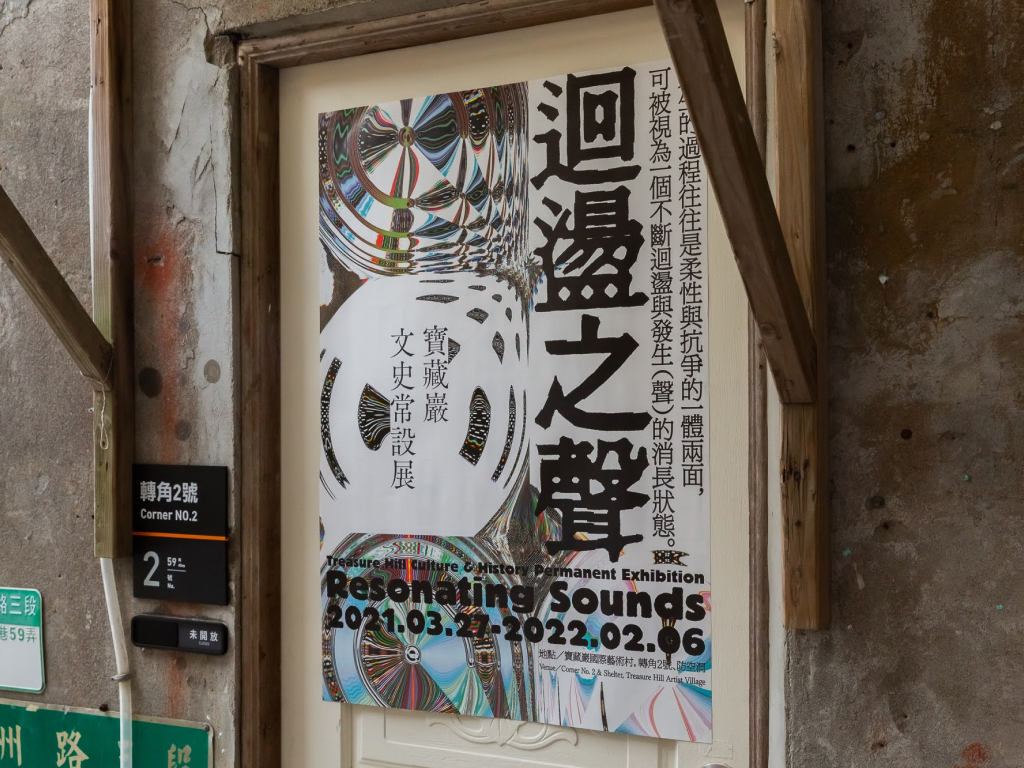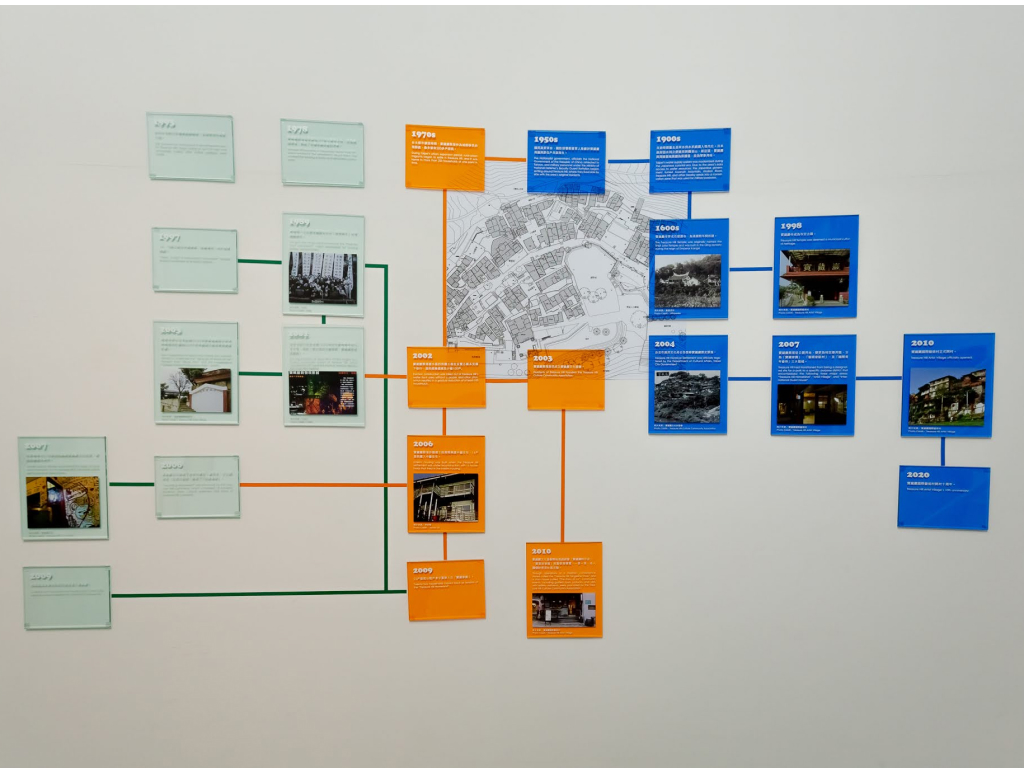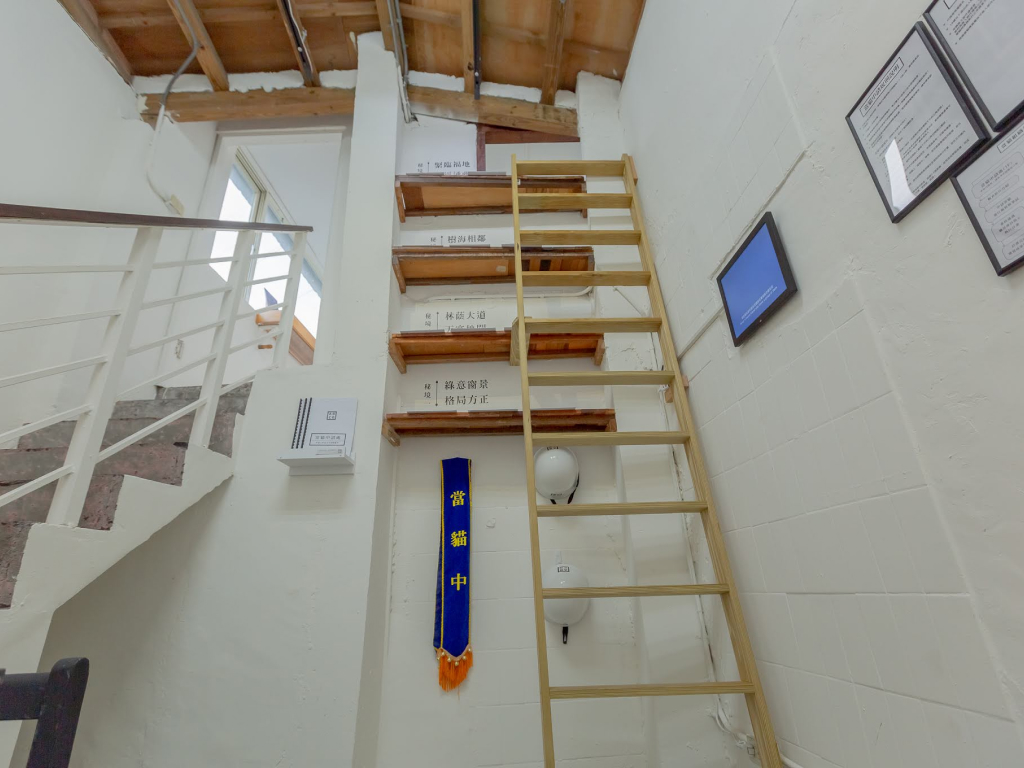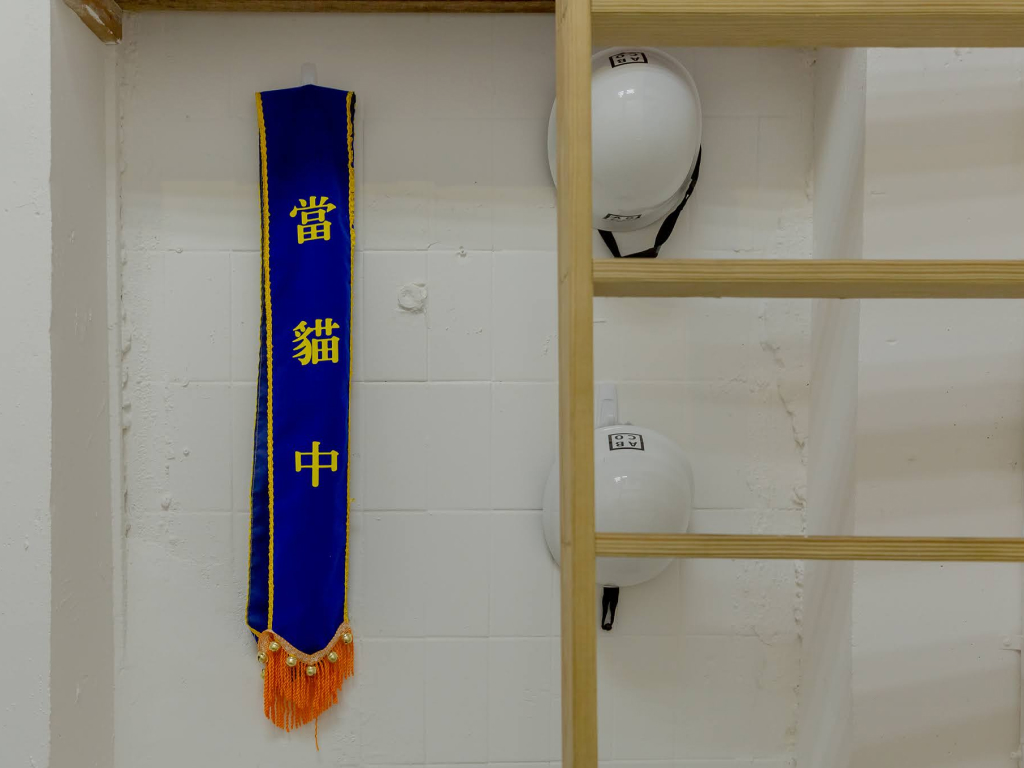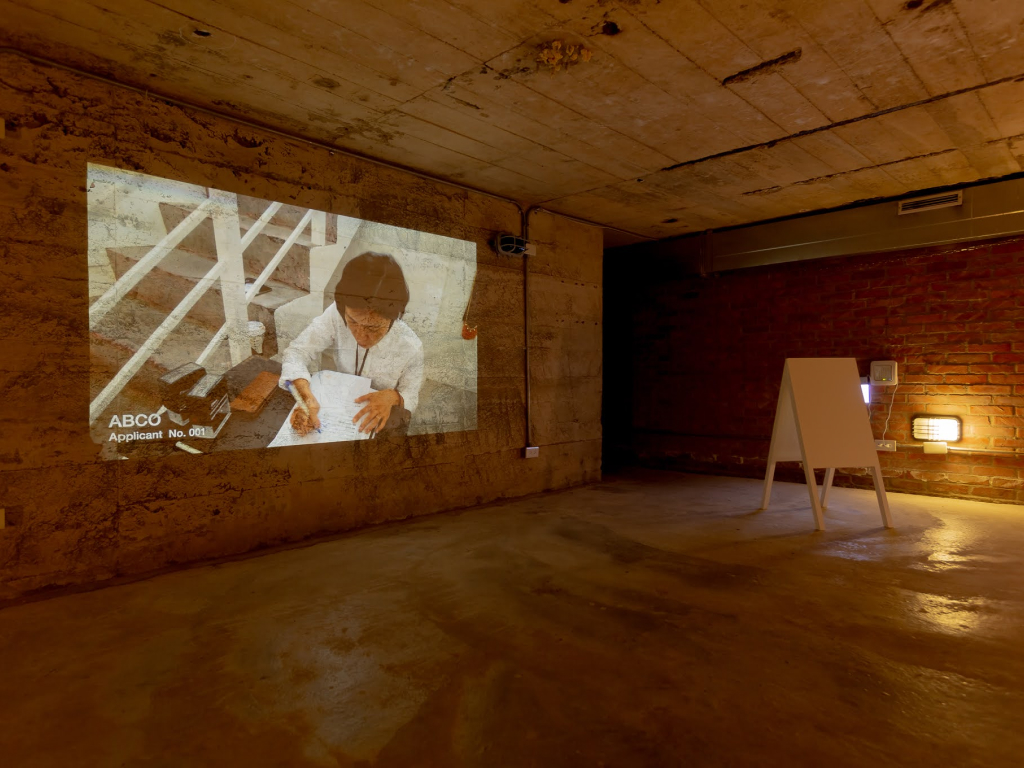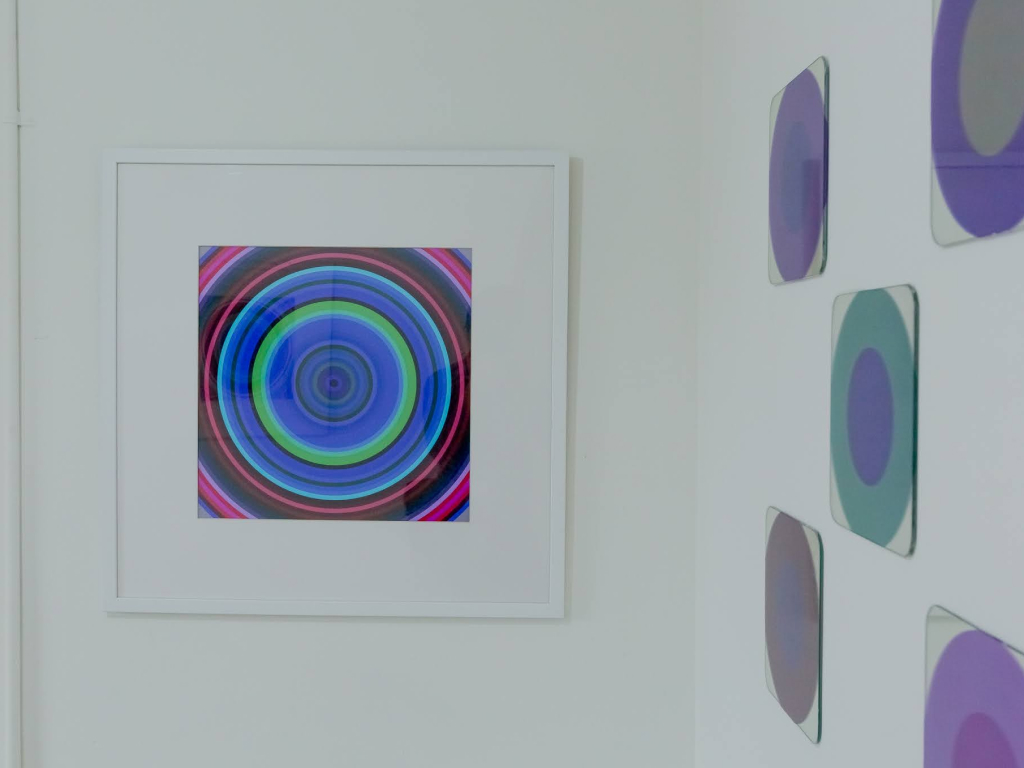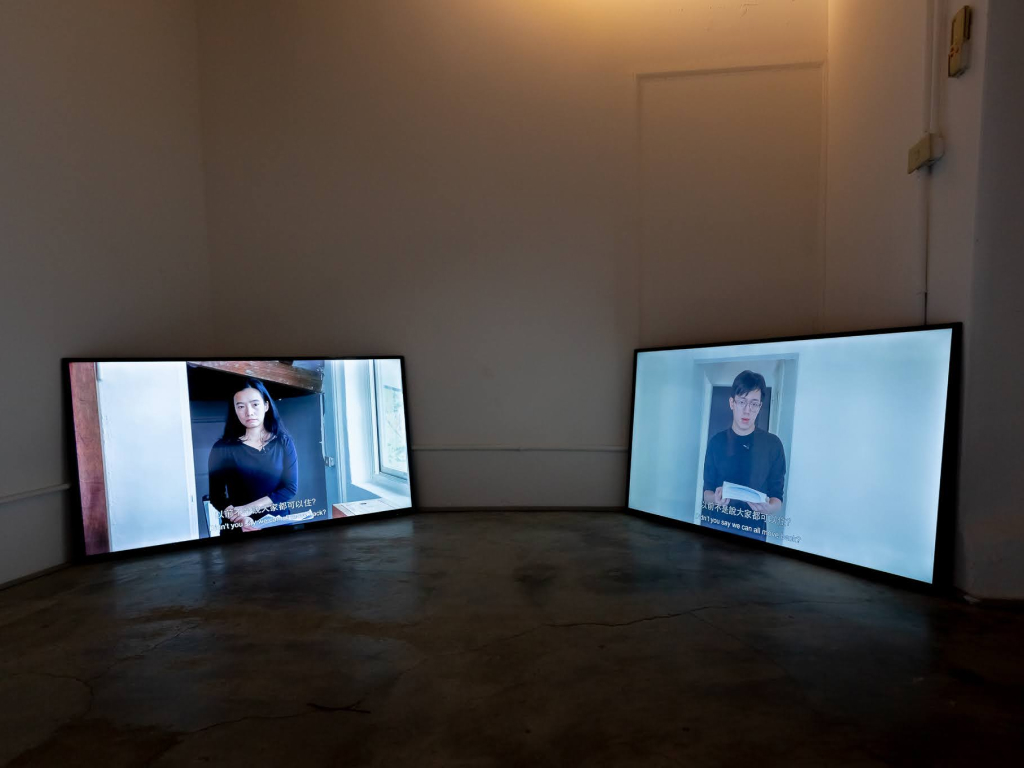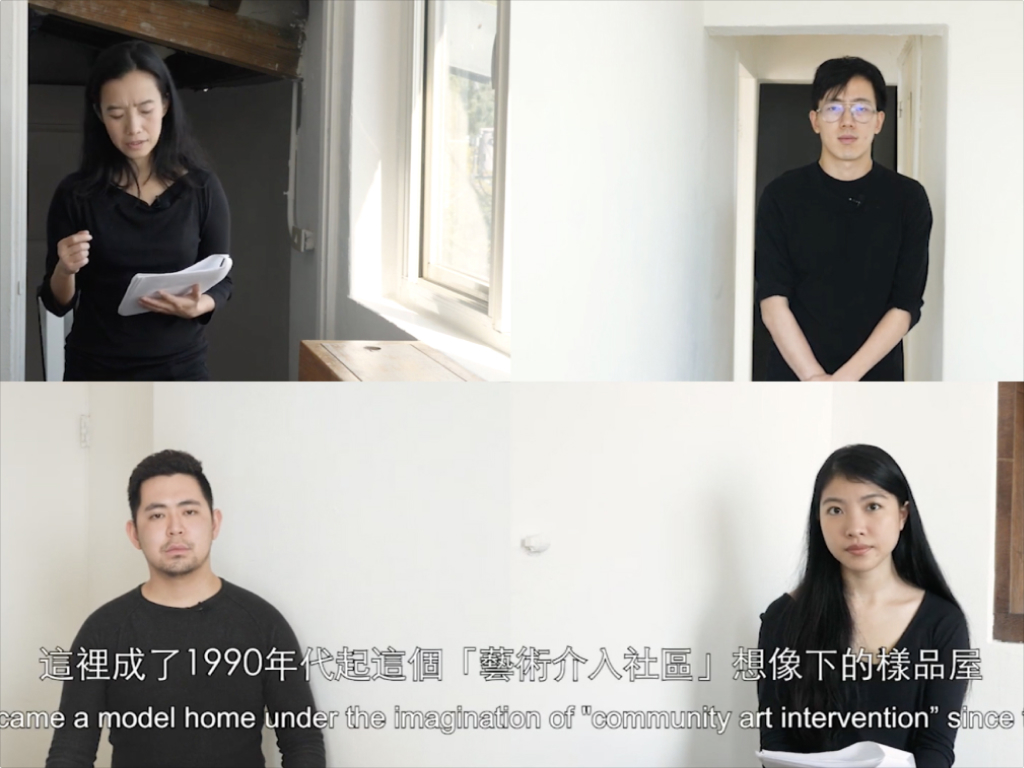歷經了多年政治與社會的更迭,寶藏巖聚落如今已以「藝居共生」的型態維持了十餘年至今。寶藏巖聚落的居住者、短居創作的國內外藝術家、關注地方創生的團體、乃至絡繹不絕的參訪者等,政權與人們的更迭來去,共同組成與打造了當今聚落的樣貌。在這一段不平靜的歲月之中,什麼隨著時間消逝?什麼被存留與延續?而當今被存留下來的又是何者對於這裡的理想?
共生的過程往往是柔性與抗爭的一體兩面,可被視為一個不斷迴盪與發生(聲)的消長狀態。展覽《迴盪之聲》從物質之間互相摩擦、撞擊所產生的聲音作為起點,延伸到概念性的話語、理念之間所產生的衝突與對話。這些來自各方聲音、理念的「迴盪」既是一種和鳴的過程。也是一種不斷達成動態平衡的生命的力量。
空間在被建立了疆界之後便邁向腐朽衰亡,它被損壞、增添、修補、隨有權者的意志賦予不同的樣貌與用途。因此空間常被認為如同有機體般脆弱而瞬息萬變,被賦予了不斷「活化」的需求。寶藏巖聚落從成形之後,歷經了自力造屋、違建聚落、公園用地、歷史聚落到如今的特定專用區等不同的時期。每個於不同階段來去寶藏巖聚落的人們,投射意念、想法與理想於其中,歷經衝突與和解,進而成了供養此地續存的要素,型塑這個聚落當今的樣子。也因此這些人們皆可被視為詮釋、驅動者,成為推動寶藏巖聚落繼續存在的因與果。
展覽由四個部分組成:〈迴盪之聲文獻區〉展出寶藏巖國際藝術村所蒐集到的學術文獻、出版、照片等資料,並與藝術家吳修銘的〈聲音散步〉網頁計畫並行;第二部分〈聲音臉譜〉同樣出自吳修銘之手,他以與寶藏巖居民的訪談帶出了社區日常,用聆聽體驗呼應展覽的歸檔主題;接著,在鄭亭亭的四連頻錄像〈但水始終沒有來〉中,他以創作者的角度出發,再創了寶藏巖聚落相關的影音資料,並利用這些歷史檔案著成了一部循環對話的劇本;第四部分邀請了黃立慧進行現地創作〈當貓〉,延伸自其長期對於「個體及群體的關係與界限」之研究,這次他追溯歷史與文獻中的間隙,以互動式遊戲的方式讓觀者試著共感那些在聚落中長期被消音、忽視的角色,例如「貓」。
當空間成了縈繞的歌,不論是以何種身分停留、駐足於寶藏巖社區的我們,如何去思考與實驗,將此地成就成一個創造生活經驗的場所?爬梳長期以來迴盪於寶藏巖聚落的多元聲音,每個人可說是都各有立場。常設展邀請每個到訪的你,一同參與創造這個空間的「生」與「聲」的樣貌。閱讀空間,而知道此地如何生,又將何以定位我們當今的位置在於何處;鳴聲討論,因而得以於日常繼續邁步、思考如何繼續向前。
After years of political and social shifts and changes, the settlement at Treasure Hill has maintained its current “Artist-Resident-Paragenesis” for over a decade. Through changes of political regimes and with people coming and going, Treasure Hill residents, local and international artists that take up short-term residencies here, groups that focus on local placemaking, and the countless visitors have collectively made up and shaped the way that Treasure Hill looks today. So, what has dissipated due to the progression of time in this uneasy period that we are going through? What has been preserved and passed down? And whose thoughts and ideas are represented by what has been preserved?
The process of paragenesis, or symbiotic existence, is often double-sided; it encompasses both soft gentleness and also resistance and has ups and downs where endless resonances, occurrences, and sounds take place. This exhibition, Resonating Sounds departs from sounds caused by frictions and clashes and then extends into conflicts and dialogues resulted from conceptual discourses and ideas. The resonances of these sounds and ideas coming from various places indicate a process of harmony, and it is also a force achieved due to an incessant dynamic balance.
After boundaries are formed around a space it then begins to decay and collapse. As it becomes broken and is expanded and repaired, it is then given different features and purposes by those with power. Therefore, it is common to think of a space as something that is fragile and impermanent, like an organic form, and it has needs to be constantly “revitalized”. After the settlement took shape on Treasure Hill, it has endured different phases, including when houses were built by the settlers and then it was deemed an illegal settlement, a park, a historical settlement, and now a “specific purpose district”. People that have come in and out of the Treasure Hill throughout the different phases have projected their ideas, thoughts and ideals, and through conflicts and reconciliations, the factors needed to maintain this place have taken shape and molded the Treasure Hill that we see today. This is why all of those people could be regarded as interpreters and initiators behind the cause and effect that propel the continued existence of Treasure Hill.
On view in this exhibition are the following four sections: The first section consists of official first-hand information, including academic literature, publications, photographs, from the Treasure Hill Artist Village, which is shown parallel to artist Wu Siou-Ming web project, Audio Walk. The second section, Facial Sound Mask, is also by Wu and consists of interviews of Treasure Hill residents that the artist has conducted to show everyday side of the community and is presented as an auditory experience to echo with the exhibition’s archival theme.
Presented in the next section is But the Water Never Came , a four-channel video work by
Cheng Ting-Ting. Departing from the perspective of the artist, the piece reinterprets audio-visual materials about the Treasure Hill settlement and uses these historical archives to write a script constructed based on a circular dialogue. The fourth section is the site-specific work, Applying For Being a Cat, by Huang Li-Hui. Extending from the artist’s extensive studies on the relations and boundaries between individuals and groups, cracks and fissures found in historical literature are traced by the artist, and using an interactive game-playing format, audiences are invited to engage in an empathetic experience about those that have been silenced or overlooked for a long time in the settlement, and this includes the “cats”.
When this space becomes like a lingering song stuck in people’s minds, regardless of which roles we take on as we come and spend some time here at Treasure Hill, what kind of thoughts and experiments should we engage in, in order to transform this place into where life experiences can be created? In reviewing the different voices that have resonated in Treasure Hill for an extensive period of time, a distinctive position is held by each person. This permanent exhibition is opened to everyone that comes to Treasure Hill and invites all to jointly contribute to creating features and sounds that are unique to this space. Through reading and getting to know more about this space, we will learn about its origin and think about what position we should take on now. As discussions unfold with contributions made by different voices, onward steps will be taken on a daily basis, and thoughts on how to strive forward will also be pondered.
迴盪之聲——寶藏巖文史常設展|
Resonating Sounds –Treasure Hill Culture & History Permanent Exhibition
Date|2021.03.27-2022.02.06
Location|Treasure Hill Artist Village
Artist|CHENG Ting-Ting, HUANG Li-Hui, WU Siou-Ming
Curator|SHIH Ya-Tien
Supervisor|Ministry of Culture, Taipei City Government
Organizer|The Department of Cultural Affairs under the Taipei City Government, Taipei Culture Foundation
Executive|Treasure Hill Artist Village
